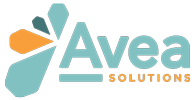
The addiction treatment industry is on the precipice of enormous change. Ongoing lawsuits—brought on by unethical behavior and business practices—will affect the way insurance providers reimburse addiction treatment facilities going forward. The challenge has been sounded: treatment providers must reevaluate and improve their manner of conduct if they wish to succeed under increased scrutiny.
In answer to the call for change, the National Association of Addiction Treatment Providers (NAATP) has scheduled The Addiction Treatment Provider Quality Assurance Guidebook for release in fall 2019. Written “for providers by providers,” the guidebook “identifies and provides implementation strategy for the core competencies of addiction treatment program operation, thereby empowering addiction treatment providers with clear direction for the proficient and ethical delivery of addiction treatment services.”
As part of their ongoing efforts, at the National 2019 NAATP conference held in May, NAATP unveiled the guidebook. As a recognized thought leader in the field, Avea CEO Ben Dittman was asked to present on Guideline D: Billing. Below are a few tips from his presentation as written in an article by Alison Knopf that appeared in the June 3 edition of the Alcoholism & Drug Abuse Weekly (ADAW) Newsletter:
1. Know your costs.
When trying to set profit margins, it is critical to know your costs. Few people know what a day of partial hospitalization costs them (costs as distinct from charges to the patient), and even fewer can say what the costs are depending on the census. The cost of running at 100 percent capacity is a lot different than the cost of running at 50 percent capacity. What centers need to know is the cost of a “unit of care”; without this information, it’s difficult to negotiate prices with insurance companies.
Once centers understand the cost of a unit of service, the next piece they need to determine is their profit. Dittman reported that somewhere between 20 and 60 percent is where most facilities can expect to see their profit margin fall. “The days of 300 percent margins are over, and everybody needs to think about that,” he said.
It’s also important to remember that insurance itself means there’s an additional cost of doing business. Keep in mind that you will spend money on a billing company or an internal billing team as well as the amount of time spent going through the denial process when considering the price you charge patients.
2. Balance billing.
Whether in or out of network, some providers bill a patient for the difference between what the health insurer pays you and what you want to charge. “We’re seeing a lot more scrutiny around balance billing,” said Dittman. “If you’re going to bill out at $3,000 a day for residential treatment, and the insurance company will be paying $1,800, you will need to communicate with the patient.” You need to collect that other money from the patient, or else you will run afoul of your insurance contract and, in some cases, the law. However, there are also new patient protection rules regarding “surprise medical bills.”
3. Collect deductibles and copays.
Connected to the balance billing issue is the issue of copays and deductibles. Insurance companies insist that you collect them; failing to do so constitutes fraud. “There’s been a huge shift toward going after patient responsibility,” said Dittman.
4. Bill the rack rates.
You should bill the insurance company the rack rate and balance bill the patient the rest if your contracted rate is lower. “If your rack rate is $1,400 but your contract with Blue Cross Blue Shield is $1,000, you should bill BCBS $1,400,” said Dittman. “Not only is that what you’re supposed to be doing, but you’re hurting the industry because you’re lowering the UCR for your area.”
5. Conduct drug testing.
Fortunately, there has been a reduction in “egregious toxicology billing,” said Dittman. The NAATP ethics guidebook has clear recommendations on this. Again, centers need to ask the questions “What services are you providing?” and “What’s a reasonable profit margin?” This is probably the top issue that has given treatment centers a black eye and flags thems for payers.
6. Organize payment plans.
These are highly valued by clients, said Dittman. They add value to the center because “people don’t value what’s free,” he said.
7. Always appeal.
One of Dittman’s clients had an 80 percent success rate based on appealing claims that differed from UCR by 20 percent. Use “usual, customary, and reasonable” (UCR) data in your appeals to insurance companies.
The industry is changing, and NAATP is leading the charge. By focusing on the tips above, facilities can revolutionize their billing and save their business. See The Addiction Treatment Provider Quality Assurance Guidebook beta for more instruction on staying on top of your game.


